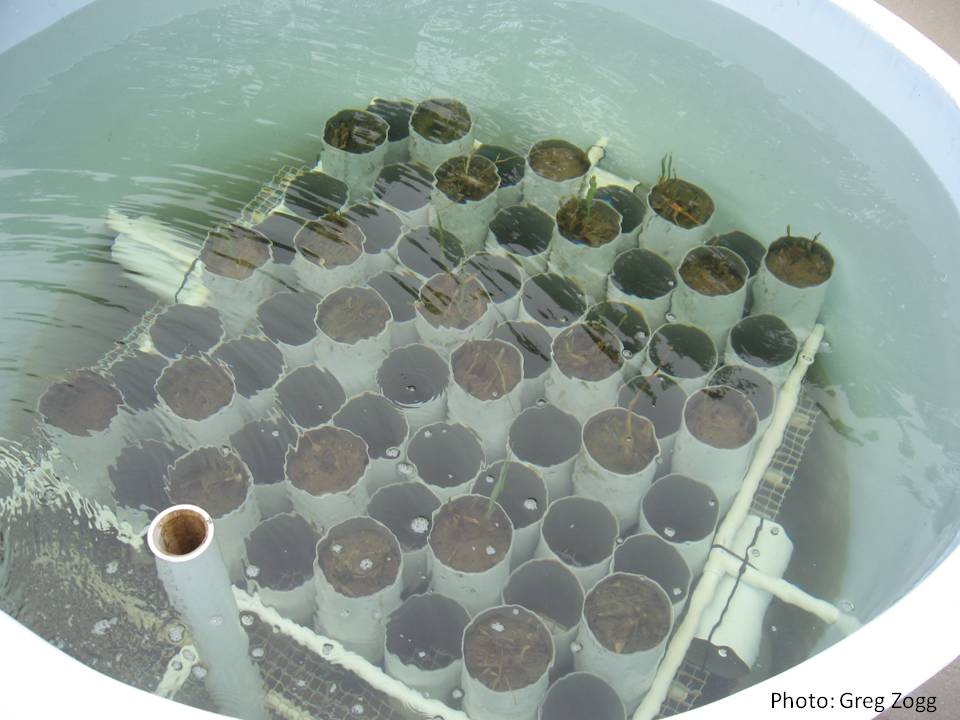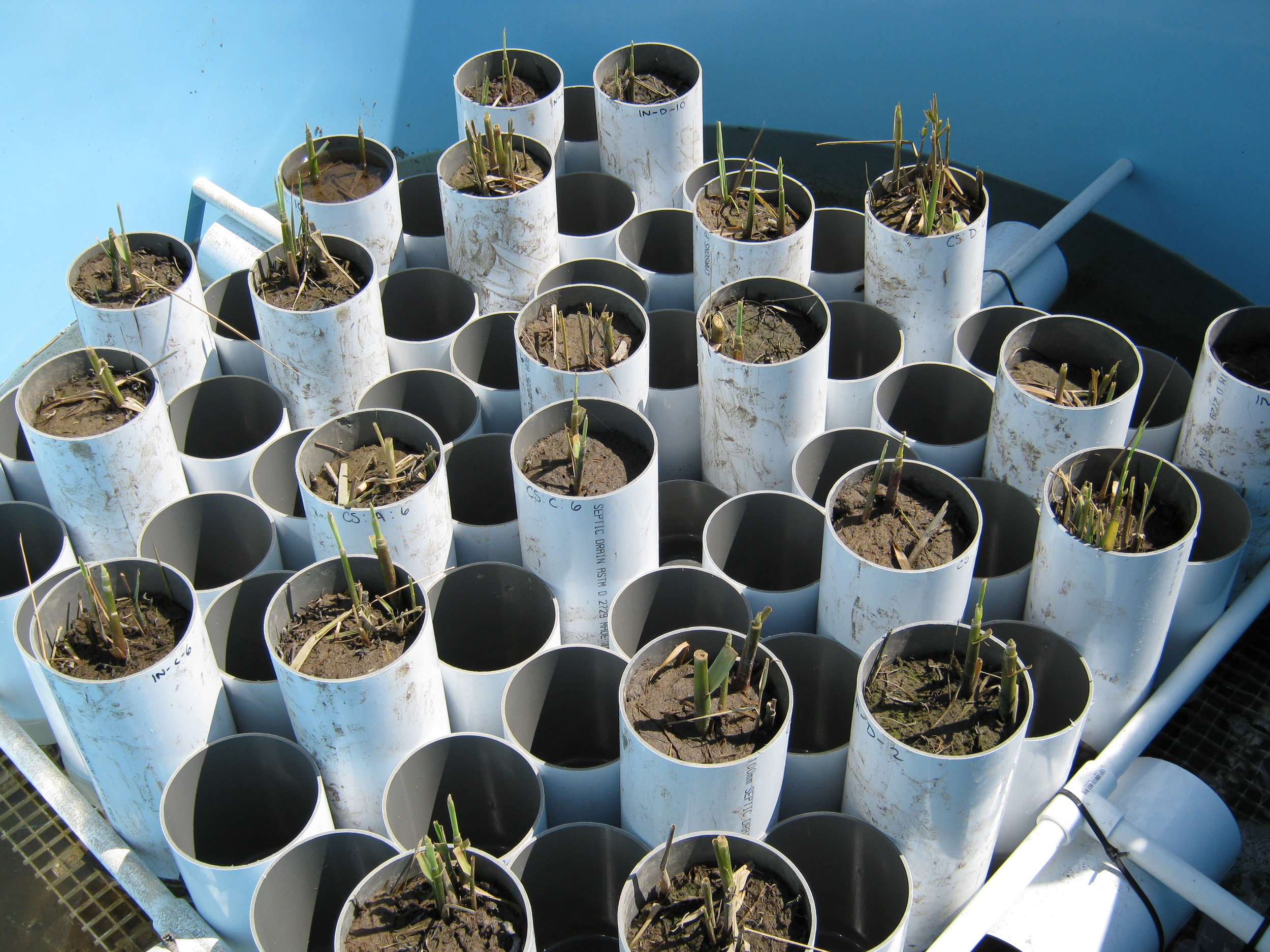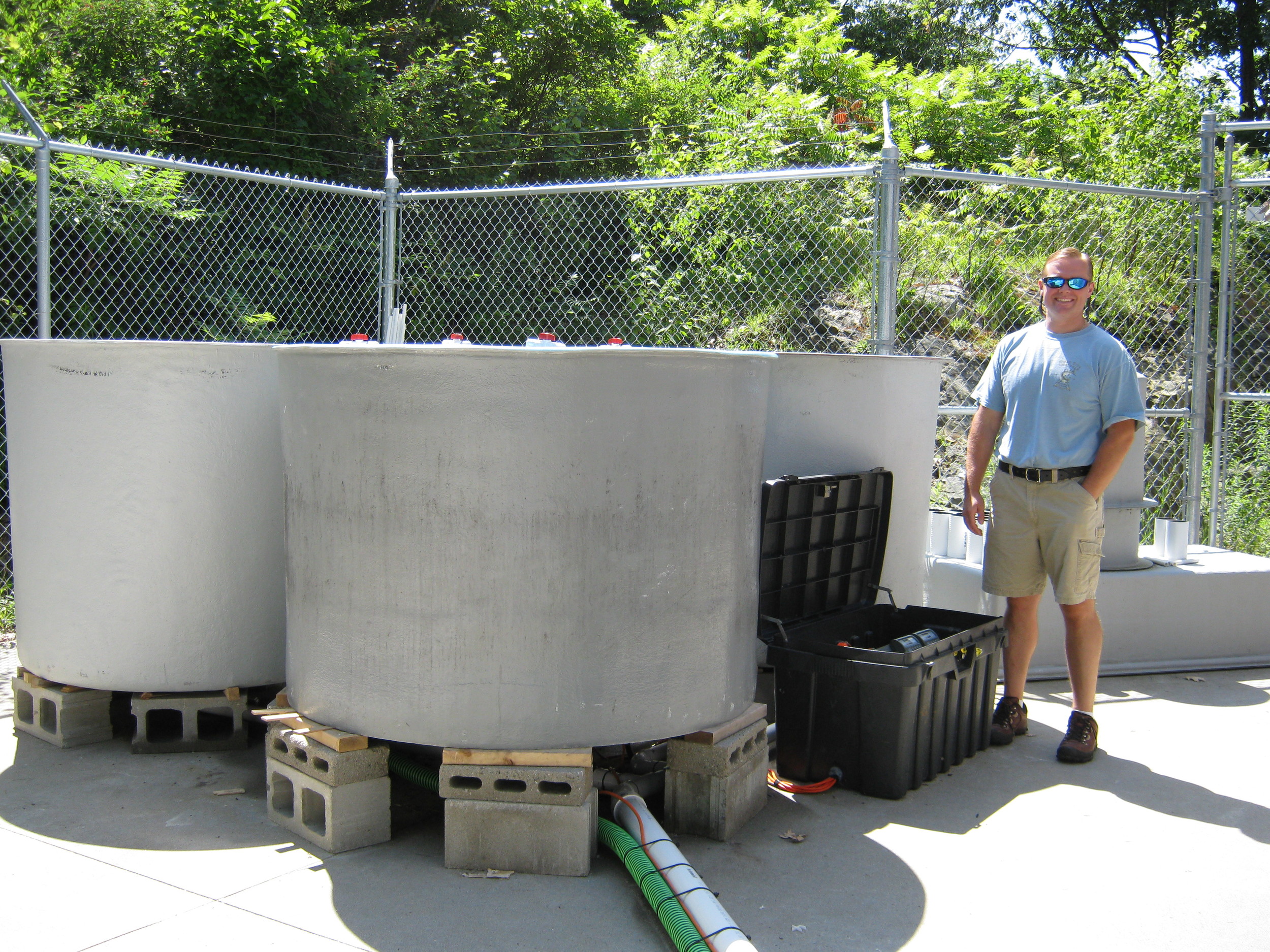Flow through tidal simulation tanks (2009).
Technology: This tank system involved plumbing four, 5’O.D. fiberglass tanks with actuated ball valves controlled by timers to simulate tidal rise and fall over 7-day intervals. Banks of timers were used to manipulate tidal inundation periods and drift. Dual standpipes were used to establish high and low water levels while maintaining a flow through environment. Flexible plumbing was used under the tanks to account for bottom flexing during drain/fill cycles; PVC was used elsewhere. A science student with no trades experience was taught how to use the power and hand tools necessary to fabricate the tank false floors, as well as create and layout all of the specimen holders.
Science: Spartina grass and the microbial community associated with its root system are critical for soft shoreline stabilization, and have evolved to living in distinct tidal zones. Elevated sea level associated with global warming is beginning to subject specially adapted estuary and tidal species to extended periods of submersion. Studying Spartina and its interstitial microbial community under increased flooding regimes will help predict its ability to adapt to sea level rise.





